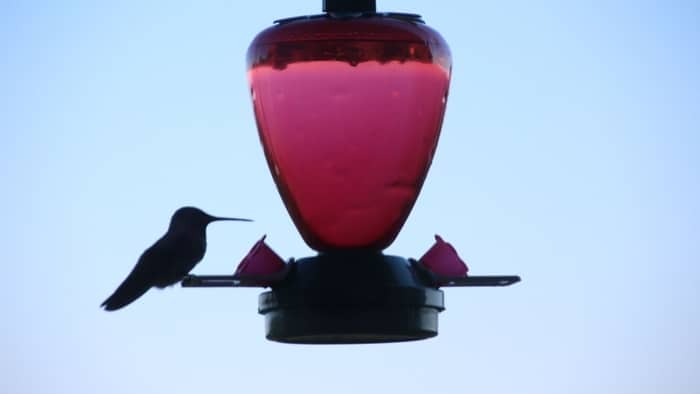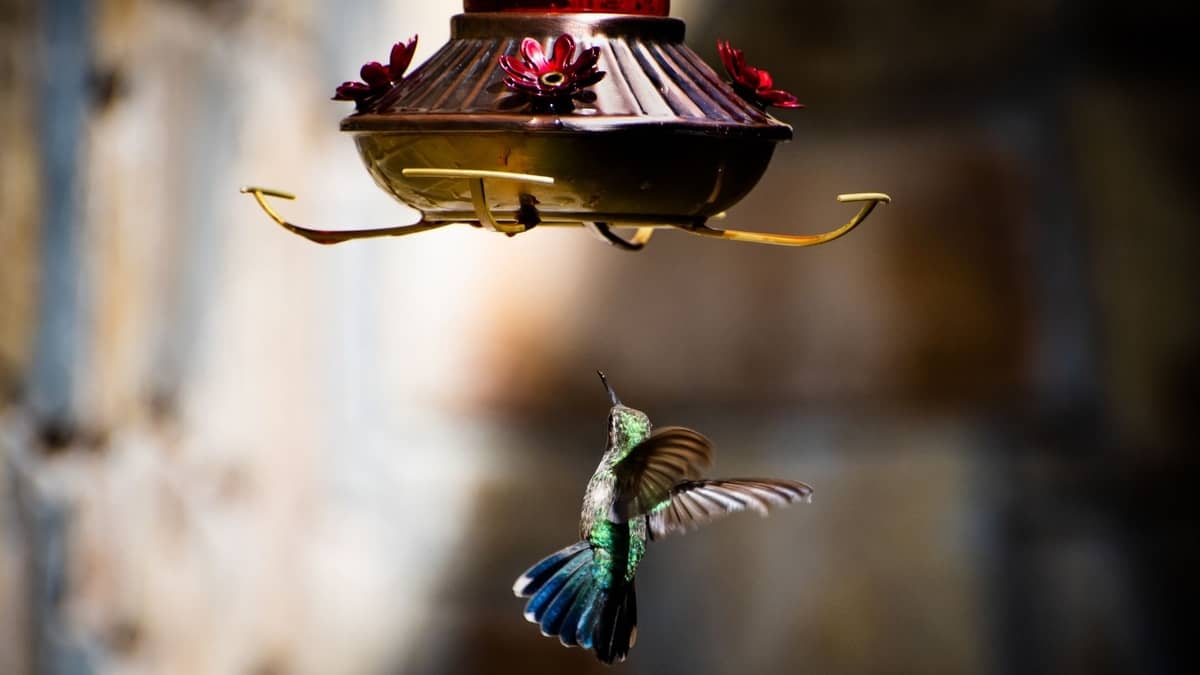Feeding hummingbirds is a great commitment, so if you wondered does hummingbird food goes bad – the answer is yes. We’ll help you keep your hummingbird food safe and your visitors healthy.
Hummingbird feeders are constantly exposed to temperature changes, wind, sun, and rain. This affects the composition of the nectar inside. The sweet environment is ideal for bacteria growth, which can be deadly to the hummers.
If this is something you’re trying to prevent, keep on reading.
How Can You Tell If Hummingbird Nectar Is Bad?
Hummingbird nectar is a 1:4 ratio of sugar and water, which you either prepare yourself or buy from pet stores. Sugar is a carbohydrate that’s vital for the hummingbird’s survival. It’s an easily ingested energy source and completely safe until it goes bad. While flower nectar can’t go bad, the human-made one is often a health threat to the hummers.
When nectar goes bad, the sugar dissolves into several carbs that are not as beneficial. In fact, it becomes harder to digest and less nutritious. In addition, an acidic environment is an ideal place for bacteria and fungus growth. The bacteria feed on sugar and develop with immense speed.
The easiest way to detect spoiled hummingbird nectar is to take a closer look. Clear, see-through nectar is safe and normal. However, cloudy nectar with floating strings inside is already spoiled.

Other signs to look for:
- Black mold on feeder openings or inside the nectar;
- Strong, sour smell;
- Milky, egg white-like substance inside the nectar;
- Dead insects inside or around the feeder;
- Thicker consistency;
- Sticky residue around the feeding ports;
- Signs of visits by bees, pests, raccoons, or even bears;
- No hummingbird visits the feeder for days.
Can Store-bought Nectar Go Bad?
Many bird lovers go for pre-made nectar as it has some added vitamins. But it’s not more durable than homemade sugar and water solution when it comes to shelf life. While it has some preservatives, it’s still sugar water that can ferment in the sun.
It can be even more dangerous in a way. As it’s believed that bright colors like red attract hummingbirds, many manufacturers use food coloring in their nectar. Unfortunately, it’s harder to notice spoilage if the nectar is colored, so you might act a little too late.

How Long Does It Take Hummingbird Food To Go Bad
Nectar can last up to a week in an outside feeder. Homemade, ready-to-use nectar can last from 10 to 14 days when kept in an airtight container in the fridge. But since weather conditions affect the feeder, it’s crucial to check on it after a few days. In the cooler months, nectar can last a few weeks without going bad.
In summer it can last as little as 4 days. The heat leads to faster fermentation of sugar. The food spoils quicker and becomes toxic to the hummers.
Bad Nectar Can Be Lethal
Spoiled nectar can kill hummingbirds. Just like inadequate water to sugar ratios, nectar that’s gone bad can kill a hummingbird in less than a day.
As nectar goes bad, it crystallizes and can stick to the beak and feathers of the hummingbird. Mold in the nectar can lead to tongue swelling, leaving the bird unable to feed. Hummingbirds consume large quantities of nectar or insects every 15 minutes from dawn till dusk. When unable to eat, they will die in a brief period.
Read more about Hummingbirds Breeding Season
Does Rain Cause Hummingbird Food To Go Bad

Rain can get into your feeder and dilute the nectar. Diluted nectar is not a health hazard, but it’s not as beneficial for hummingbirds. Therefore they’ll start avoiding the feeder in question. Even after replacing the nectar with a fresh one, it will take some time to bring the old visitors back.
Most hummingbird feeders have rain guards on top and don’t let rain in. Bird lovers know that the 1:4 sugar and water ratio is the closest we can get to flower nectar. But, once it’s diluted, it’s doesn’t provide the same energy boost to hummers.
How Do You Keep Hummingbird Food From Spoiling
You can’t change the recipe to prevent the nectar from spoiling, but you can take other precautious measures. Start by picking suitable feeders. If you tend to get a lot of hummingbird frequency and they can empty a large feeder, great. But if you’re starting to attract hummingbirds to your garden for the first time, go for smaller feeders.
Then choose a good position for the feeders. A partially or fully shaded spot is ideal. Feeders won’t be as affected by the morning sun, but the afternoon sun is too warm, causing the nectar to go bad faster.
Don’t make more nectar than your feeders can fit. Make a fresh solution before you fill-up the feeders.
Each time you empty and refill the feeders bring them inside for a deep clean. Make sure to soak all the components and use safe detergents. Always wash thoroughly to avoid any soap residue. Place the feeder in full sun to sterilize naturally before assembling and filling up.
Why Are Hummingbirds Avoiding Fresh Nectar
So you’ve done anything by the book, and hummingbirds are still avoiding your feeder? Pay close attention to the flowers in your garden. Once nectar-rich flowers bloom, hummingbirds resort to them instead of the feeders.
Flower nectar doesn’t go rancid. It’s produced in tiny quantities and replenished as soon as it’s consumed. Remember that hummingbirds are wild birds, and for ages, they were feeding on flower nectar. In remote locations, they’re still surviving on bugs and flowers and not human-provided sugar water.
Bottom Line: How To Keep Hummingbird Food From Going Bad
There’s no greater feeling for a birder to see a garden full of hummingbirds jumping from feeder to feeder. But as you lean into feeding hummingbirds, it’s necessary to keep them safe.
Hummingbirds’ food includes simple ingredients that can spoil fast. The average life of nectar in feeders is 4 to 10 days, depending on the season. Monitor the feeders for smell, mold, nectar appearance, and drowned bugs. Use clear nectar so you can quickly notice when it has gone bad.

